The banana plant (Musa spp.) is one of the most iconic tropical plants, beloved for its large, lush leaves and its sweet, nutrient-rich fruit. Though often mistaken for a tree, the banana is actually the world’s largest herbaceous plant, growing from an underground rhizome and producing its fruit in large hanging clusters. Whether cultivated in home gardens, farms, or containers, one of the essential aspects of successfully growing banana plants is understanding their watering needs.
A frequent question among both new and experienced gardeners is:
“How often should you water a banana plant?”
In this comprehensive guide, we’ll break down everything you need to know about watering banana plants, from frequency and technique to environmental factors, seasonal care, and signs of over- or under-watering.
Understanding the Banana Plant’s Natural Habitat
To properly care for a banana plant, it’s important to understand the kind of environment in which it naturally thrives:
- Native habitat: Tropical and subtropical regions of Southeast Asia
- Typical environment: Warm, humid areas with consistently moist, fertile, and well-draining soils
- Growth pattern: Herbaceous perennial growing from underground rhizomes and producing new suckers (shoots) annually
These environmental preferences reveal a key fact: banana plants love moisture but dislike waterlogged soil.
How Often Should You Water a Banana Plant?
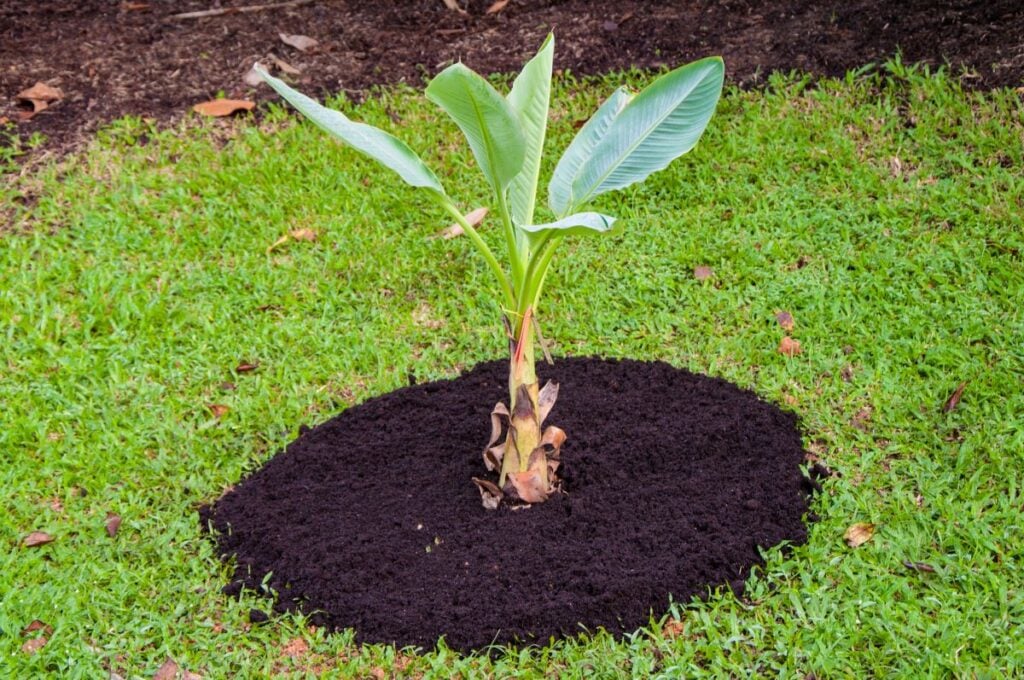
General Watering Guidelines
- Young or Newly Planted Banana Plants:
Water every 2–3 days for the first few weeks after planting to help establish roots. - Established Outdoor Banana Plants (In-Ground):
Water every 2–3 days in hot, dry weather and once a week during cooler months. - Container-Grown Banana Plants:
Water every 1–2 days in summer, ensuring the soil remains evenly moist but not soggy. In winter, reduce to every 3–5 days depending on indoor temperature and humidity.
Important Note:
The goal is to keep the soil consistently moist but well-drained. Avoid letting the soil dry out completely or become waterlogged.
Factors That Influence Banana Plant Watering Frequency
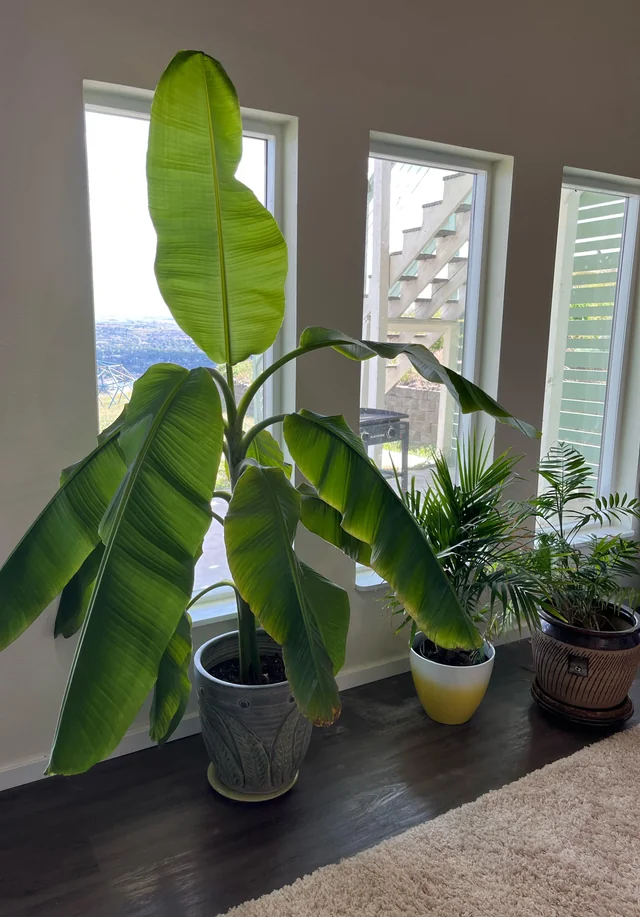
Several factors determine how often your banana plant will need watering:
Temperature and Season
- High temperatures increase evaporation and plant transpiration, necessitating more frequent watering.
- Cooler seasons or dormancy reduce water needs.
Humidity Levels
- Ideal humidity: 50–80%
- In dry indoor environments or arid climates, increase watering frequency and mist the leaves regularly to prevent leaf scorch and curling.
Soil Type and Drainage
- Light, sandy soils drain quickly and dry out faster.
- Heavy, clay soils retain moisture longer, increasing the risk of waterlogging.
Ideal soil for bananas is rich, organic, and well-draining with good moisture retention.
Plant Size and Growth Stage
- Young plants and active growth periods require more water.
- Dormant plants in winter require less frequent watering.
Container Size and Type
- Terracotta pots dry out faster than plastic or ceramic.
- Smaller pots also dry more quickly than large containers.
How to Know When Your Banana Plant Needs Water
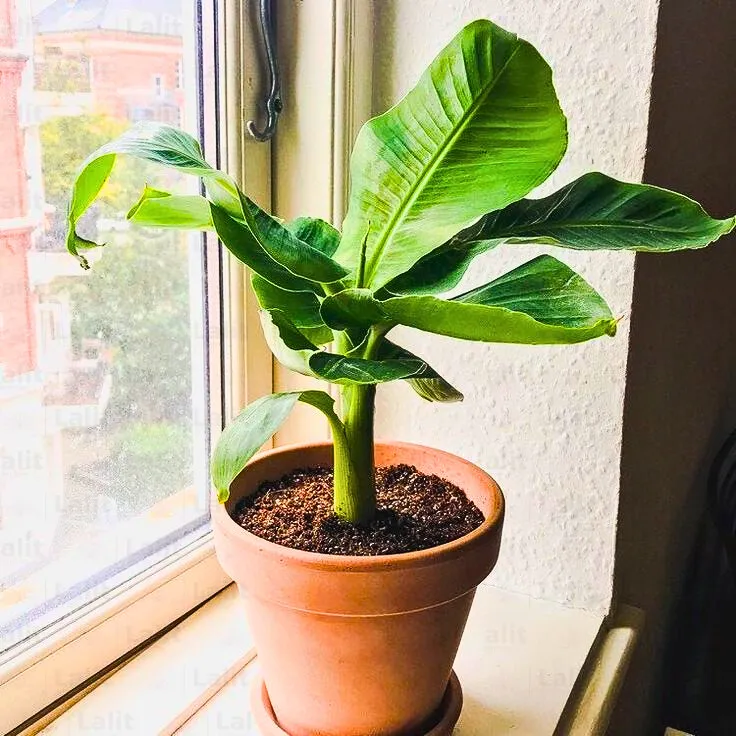
Soil Moisture Test
Insert your finger 2–3 inches into the soil:
- If dry: Time to water.
- If moist: Wait another day or two.
Alternatively, use a soil moisture meter for precise readings.
Leaf Condition
- Drooping, curled, or browning leaves suggest the plant is thirsty.
- Yellowing leaves and soggy soil could indicate overwatering.
Soil Appearance
Dry, cracked soil indicates insufficient moisture, while consistently soggy or muddy soil signals overwatering.
How to Water a Banana Plant Properly
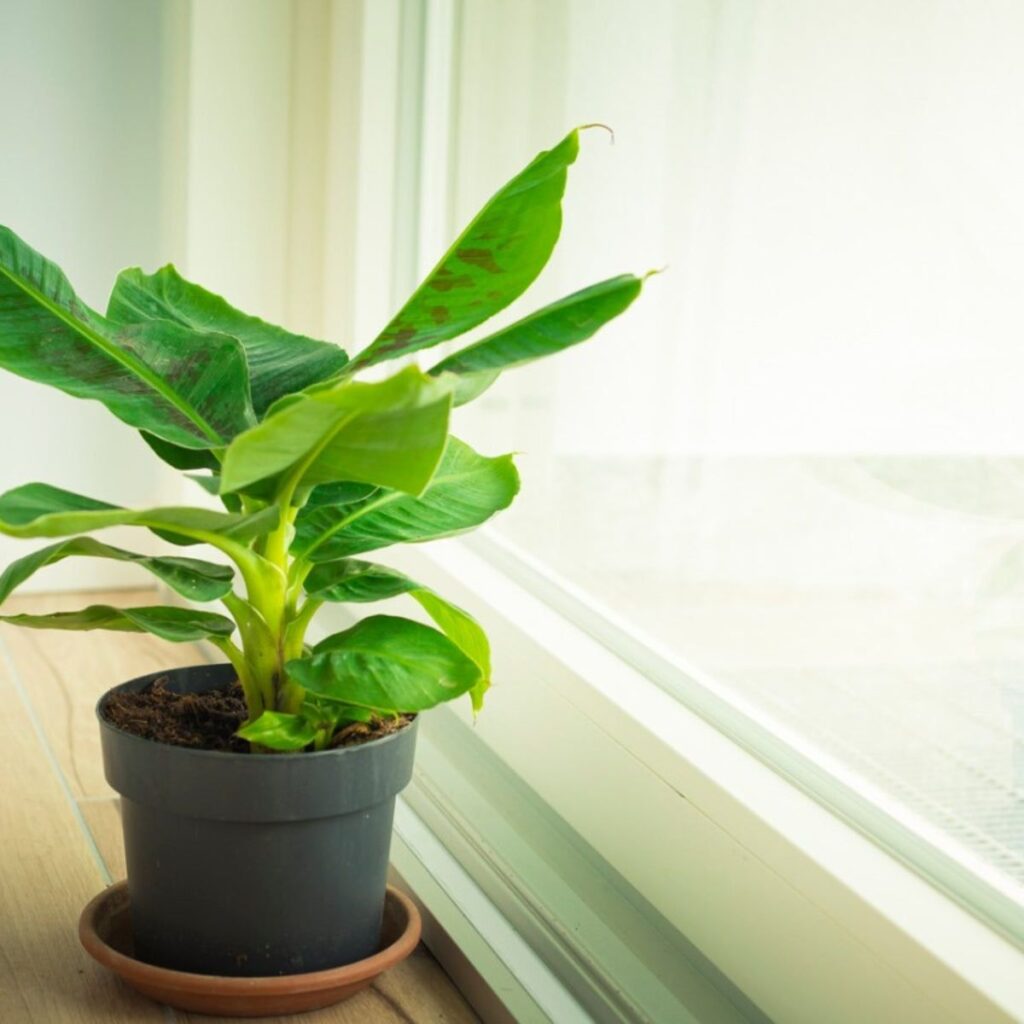
Deep, Thorough Watering
Water generously until moisture reaches the root zone (around 12–24 inches deep). Shallow watering encourages weak, shallow roots.
Water at the Base
Always water directly at the base of the plant rather than over the leaves to prevent fungal diseases.
Use Room-Temperature Water
Avoid shocking the roots with icy or overly hot water.
Morning Watering
Water early in the day to allow foliage to dry out by evening, reducing disease risk.
Mulch for Moisture Retention
A 2–4 inch layer of organic mulch (like straw or wood chips) conserves soil moisture, moderates temperature, and suppresses weeds. Keep mulch 6 inches away from the stem to avoid rot.
Seasonal Watering Chart for Banana Plants
| Season | In-Ground Bananas | Potted Bananas |
|---|---|---|
| Spring | Every 3–4 days | Every 2–3 days |
| Summer | Every 2–3 days | Daily (if hot) |
| Autumn | Every 5–7 days | Every 3–5 days |
| Winter (Dormant) | Every 7–14 days | Every 5–7 days |
Adjust based on rainfall, soil type, temperature, and humidity.
Signs of Overwatering and Underwatering
Overwatering Symptoms
- Yellow, limp leaves
- Soft, mushy stems
- Root rot (black, foul-smelling roots)
- Stagnant, soggy soil
Solution:
Improve drainage, reduce watering frequency, and trim affected parts.
Underwatering Symptoms
- Wilted, curling leaves
- Dry, cracked soil
- Leaf tip browning and scorch marks
- Slow growth or leaf drop
Solution:
Increase watering frequency and mulch to retain soil moisture.
Best Watering Practices for Banana Plants
Install a Drip Irrigation System
Especially useful for large outdoor plants or orchards, delivering consistent, deep moisture.
Improve Soil Drainage
Mix in compost, sand, or perlite for better aeration and moisture control.
Avoid Watering in the Evening
Evening moisture can invite fungal problems.
Use Rainwater When Possible
Banana plants thrive with naturally soft, chlorine-free rainwater.
Check Soil Frequently in Hot Weather
During peak summer, check soil moisture daily to avoid stress.
Common Watering Mistakes to Avoid
- Overwatering during dormancy
- Neglecting water during fruiting season
- Frequent, shallow watering
- Allowing water to pool around the base
- Using cold or chlorinated water
Conclusion
Banana plants thrive with consistent, deep, and balanced watering routines. While they love moist soil, it’s essential to avoid waterlogging and provide excellent drainage, especially in cooler seasons. Understanding your plant’s growth stage, soil type, weather, and light conditions is key to developing an effective watering schedule.
In summary:
- Water young banana plants every 2–3 days.
- Mature in-ground plants typically need water every 2–3 days in hot months and once a week in cooler months.
- Container bananas require daily watering in summer and less in winter.
- Always check soil moisture before watering.
By observing these principles and adjusting based on conditions, you’ll keep your banana plants healthy, vibrant, and productive — rewarding you with lush foliage and, if conditions are right, sweet homegrown bananas.




Leave A Comment